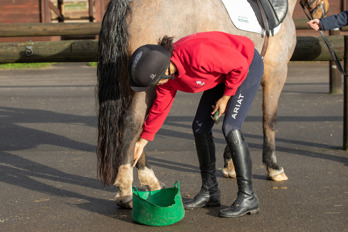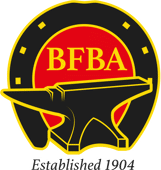Horses’ hooves are complex, weight-bearing structures that carry the whole horse. Looking after your horse’s hooves is incredibly important. Keeping them healthy with regular attention from a farrier, helps to prevent any problems and keep the hooves in optimum condition.
For specific advice regarding donkeys visit The Donkey Sanctuary website.
Conformation
Daily care
Picking out hooves

Climate
The environment can also affect the health of horse’s feet. The hoof wall will naturally expand in wet conditions and contract when dry2. A topical hoof dressing applied year-round will help to promote a more even moisture content and help to protect against seasonal fluctuations. Your farrier will be able to advise if this would be beneficial and which product is most suitable.
Diet
Diet can directly impact the horse’s hooves. Feeding a balanced high forage diet will ensure that vitamins and minerals are obtained, allowing healthy hoof growth.
Biotin is often fed as a supplement to horses with poor hoof quality. Research has shown that this vitamin (B7) contributes to strong bonds within the hoof wall tissues therefore improving the quality of the feet3. Biotin naturally occurs in grass and if feeding a balanced diet, the horse should be obtaining the required amount. However, horses that have excess weight gain are at risk of laminitis and therefore will need a more controlled diet - grazing restricted and may require a balancer feed to make sure they are receiving a balanced diet. Underweight horses, or horses not getting their vitamin and mineral requirement, are at risk of growing weaker hoof wall tissue which is prone to cracking and splitting and may therefore benefit from a biotin supplement. Speak with your farrier for advice specific to the requirements of your horse.
Activity and exercise
Keeping a clean environment
It’s important to make sure that a horse always has a clean, dry place to stand whether they’re turned out or stabled. Prolonged exposure to wet or dirty conditions can cause infections of the hoof. Make sure that stables are regularly mucked out and that fields have a hard standing area or grass matts.
The role of the farrier

References
1.Thomas, C. (2022) Hoof Care: Keeping Your Horse’s Feet in Tip Top Condition.
2.Stewart, J. (2013) Understanding the Horses Feet.
3.Kentucky Equine Research. (2011) Nutrition Affects Hoof Growth in Horses.


